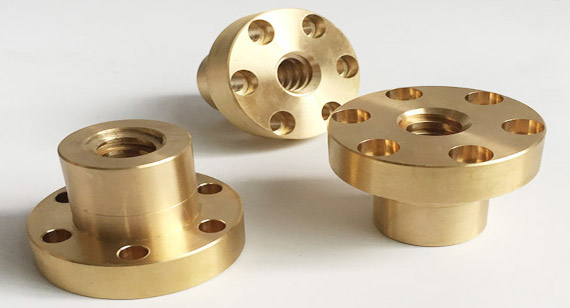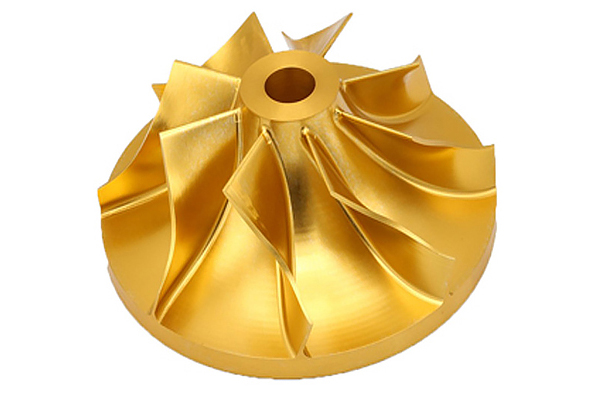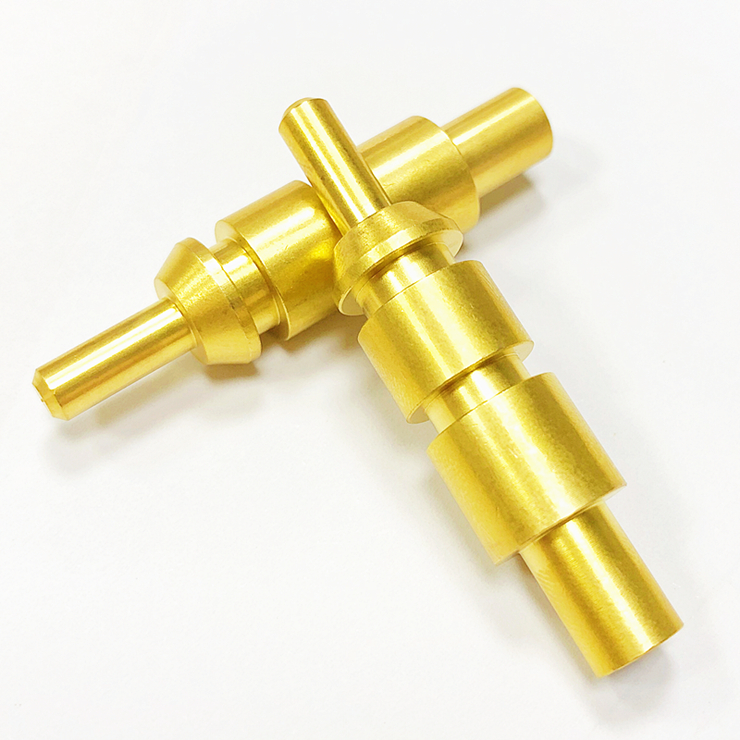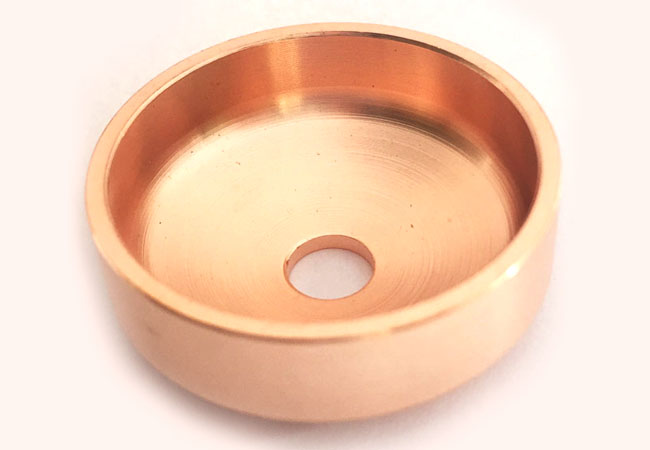Brass vs Bronze vs Copper: Differences and Distinctions
Brass, bronze and copper, three traditional and important metal materials, play an indispensable role in the field of CNC machining. Their unique physical and chemical properties, combined with the high precision and high efficiency of CNC machining technology, make these metals show excellent performance in a variety of industrial applications. However, due to their similarities, they often lead to confusion in material selection, especially for those part designers who are not familiar with the properties of metals.
This article aims to explore the differences and distinctions between brass, bronze and copper in depth, and by gaining a deep understanding of their characteristics and application range, we can make the best material selection for metal projects, thereby ensuring the performance and quality of the product is optimized.
Common Brass Alloys Used in VMT.
Brass is an alloy of copper and zinc. By adjusting the zinc content, brass materials with different properties can be obtained. In CNC machining, brass is favored because of its good machining properties. CNC milling and turning technology can easily cope with the machining needs of brass materials and achieve complex shapes and high-precision machining. The following are the brass alloys commonly used in VMT:

Alloy 260: Contains approximately 70% copper and 30% zinc, and has excellent hot formability and easy cold working characteristics.
Alloy 280: Contains approximately 60% copper and 40% zinc, with trace amounts of iron. It is often used to prevent the growth of marine organisms such as barnacles on ship hulls.
Alloy C360: Contains approximately 60% copper, 35.5% zinc, up to 3.7% lead and trace amounts of iron. It is one of the easiest to machine of all brasses and is often used for parts such as gears and bushings.
Alloy 385: Although called bronze, this is essentially a brass alloy containing approximately 59% copper, 42% zinc, and up to 3.5% lead, and is popular in aluminum extrusion construction.
Brass 464 Marine Grade: Contains approximately 59% copper, 40% zinc and 1% tin, as well as a small amount of lead. It has excellent corrosion resistance to seawater and is suitable for various accessories on ship decks.
Common Bronze Alloys Used in VMT
Bronze is an alloy of copper and other metals, with copper and tin being the most common. Bronze materials have unique advantages in CNC machining. Due to its low melting point, high hardness, and strong plasticity, bronze is very suitable for casting and forging. The following are bronze alloys commonly used in VMT:
Aluminum bronze: It has high strength, hardness, wear resistance and corrosion resistance, especially in seawater and certain corrosive media. It is widely used in the manufacture of ship propellers, pump bodies, valves, bearings and other parts that require high strength and corrosion resistance.
Beryllium bronze: It is a bronze alloy containing beryllium, which has extremely high strength, hardness, elastic limit and fatigue limit, while maintaining good electrical and thermal conductivity. It also has good corrosion resistance and is non-magnetic, making it an ideal material for manufacturing precision instruments and equipment.
Tin bronze: It has good castability, wear resistance and corrosion resistance. As the tin content increases, its strength and hardness will also increase accordingly.
Phosphor bronze: Phosphor bronze is an alloy made by adding a small amount of phosphorus to tin bronze. It has higher strength and hardness, as well as better wear resistance and corrosion resistance. It is often used to manufacture electrical connectors, switches, springs and other parts that require high conductivity, high elasticity and corrosion resistance.
Commonly Used Copper Alloys in VMT
Copper is a metal element with good electrical conductivity, thermal conductivity and ductility. Its pure purple or red appearance is impressive. In CNC machining, pure copper is often used to manufacture parts that require high electrical conductivity or high thermal conductivity, such as electrical connectors, heat exchangers, etc. The following are copper alloys commonly used in VMT:

Oxygen-free copper: has extremely high purity and conductivity while maintaining good ductility. Oxygen-free copper is usually very pure, which means it contains very few impurities, which improves its conductive properties. It is suitable for manufacturing parts that require high conductivity and high ductility, such as electrical connectors, precision instrument parts, etc.
Electrolytic copper: It is obtained through the electrolytic process and has higher purity and more uniform grain structure, which improves its performance. It is widely used in electrical, electronic, heat exchange and other fields, especially in situations where efficient heat and electrical conduction are required.
Tellurium copper: Contains about 0.7% tellurium, which gives it excellent machinability and high formability in addition to excellent electrical and thermal conductivity.
Key Differences Between Brass, Bronze, and Copper
Elemental Composition:
Copper is mainly composed of the element copper (Cu), with the chemical symbol Cu and atomic number 29. Pure copper has good electrical and thermal conductivity and ductility, and presents a pure purple or red appearance.
Brass is an alloy of copper and zinc, with the main components being copper (Cu) and zinc (Zn). Generally speaking, the copper content of brass accounts for 60% and the zinc content accounts for 40%.
Bronze is mainly an alloy based on copper (Cu) and tin (Sn), but may also contain other elements such as lead (Pb), aluminum (Al), iron (Fe), nickel (Ni), manganese (Mn), etc. to meet specific performance requirements.
Melting Point:
Pure copper has the highest melting point, followed by brass, while bronze has a relatively low melting point. This difference in melting points gives these three metals unique advantages and characteristics in their respective application fields. The melting point of pure copper is 1083.4°C. This value is the fixed temperature point at which copper changes from solid to liquid at standard atmospheric pressure.
The melting point of brass usually ranges from 934-967°C, depending on the zinc content in its alloy composition and other alloying elements that may be added. The addition of zinc lowers the melting point of copper, allowing brass to melt at a lower temperature.
The melting point of bronze is relatively low, generally around 800°C, but the specific value will also vary depending on its alloy composition. Bronze has a lower melting point than pure copper, which makes it easier to flow and form during casting.
Color:
Pure copper has a pure purple or red appearance.
Brass is usually yellow or brown in color, depending on the amount of zinc in the alloy and other alloying elements that may be added. The addition of zinc changes the crystal structure and electron configuration of copper, resulting in a change in color.
Bronze varies in color depending on the alloy composition, but is usually a blue-gray or dark green. These color differences are mainly due to the elemental composition and chemical reactions during the alloying process.
Corrosion Resistance:
The corrosion resistance of brass is heavily regulated by the zinc content and additional alloying elements. In normal atmospheric environments, brass exhibits a relatively slow corrosion rate, but in specific environments such as water containing chlorides and iodides, its corrosion rate may increase significantly.
Bronze, as an alloy of copper and other metals, uses tin as the main alloying element, supplemented by aluminum, lead, etc. Its corrosion resistance also varies with the alloy composition. Bronze performs particularly well in saltwater environments, making it an ideal choice for ship accessories and underwater marine components.
Pure copper, as an electropositive metal, has excellent corrosion resistance in the atmosphere, seawater and fresh water due to its high thermodynamic stability and non-oxidative properties, and can form a protective film on the surface to further resist corrosion. Overall, bronze has the best corrosion resistance among the three.
Durability:
In terms of durability, bronze stands out with its high strength, high corrosion resistance and good wear resistance, becoming one of the strongest and most durable materials.
Brass, with its comprehensive corrosion resistance and processing performance, shows good durability in a variety of fields.
Pure copper, with its unique electrical conductivity, thermal conductivity and softness, plays an important role in specific fields. Each metal has its own unique durability characteristics, and the selection needs to be comprehensively considered according to the specific application scenario and needs.
Weight:
Pure copper is usually slightly heavier than brass for the same volume, as its density is slightly higher than that of common brass alloys, while the weight of bronze depends on its specific alloy composition.
It should be noted that brass and bronze are alloys of copper, and their weight is affected not only by density and volume, but also by the types and proportions of alloying elements.
Machinable:
Brass is an alloy of copper and zinc, and it has excellent machinability. Brass has good ductility and plasticity, making it easy to cut, drill, bend and punch during machining.
Bronze may be slightly less machinable than brass, depending on its alloy composition and processing method.
Pure copper is also unique in terms of machinability. Pure copper has very good ductility and plasticity, and can be easily stretched, bent and punched. However, the hardness of pure copper is relatively low, which to some extent limits its application in certain occasions that require high strength and wear resistance.
Weldability:
Brass, bronze and copper can all be welded. Brass is compatible with a variety of welding techniques, including gas welding, arc welding (such as MIG, TIG), laser welding, and brazing. This flexibility allows brass to find suitable welding solutions in a variety of application scenarios.
In contrast, the weldability of bronze is more complex, mainly restricted by its alloy composition and physical properties . Bronze has a narrow temperature range when liquid, which increases the difficulty of controlling the temperature during welding, and can easily lead to welding defects and uneven structure.
The high thermal conductivity of copper requires the use of a high-power heat source during welding and preheating of the weldment to ensure that the heat can be fully transferred to the weld area.
Below is a tabular overview of the differences and distinctions between brass, bronze, and pure copper:
| brass | bronze | Copper (red copper) | |
| Elemental composition | An alloy of copper and zinc, which may contain small amounts of lead, aluminum, silicon, etc. | Copper and tin are the main elements, and may contain aluminum, nickel, phosphorus, zinc and other elements | Pure copper, may contain small amounts of impurities |
| color | Bright golden to coppery, depending on zinc content | Reddish brown to blue-gray, often with an oxide film on the surface | Reddish brown with metallic luster |
| Melting point | Relatively low, about 900-950°C | Higher, depending on alloy composition, generally 950-1050°C | Higher, about 1083°C |
| density | Relatively low, about 8.73g/cm³ | Relatively high, about 8.8g/cm³ | Higher, about 8.96g/cm³ |
| Corrosion resistance | Better, but lower than bronze and pure copper | Very good, especially in salt water environments | Excellent, forms a protective coating |
| strength | Medium, moderate tensile and yield strength | High, suitable for applications requiring high strength and wear resistance | Medium to low, but easy to process |
| hardness | Medium, depending on alloy composition | High, the hardest of the three | medium |
| Processing performance | Good, easy to process and shape | Poor, hard, not suitable for processing | Excellent, easy to process and shape |
| Weldability | Good, suitable for a variety of welding methods | Poor, special processes and measures are required | Good, but be careful of heat loss due to high thermal conductivity |
| Electrical conductivity | Medium, about 28% of pure copper | Lower, about 15% of pure copper | Excellent, high conductivity |
| Thermal conductivity | Medium to low, lower than bronze and pure copper | Higher, but lower than pure copper | Excellent, high thermal conductivity |
| Main Application | Pipes, valves, radiators, decorations, etc. | Sculptures, musical instruments, bearings, marine hardware, etc. | Wires, electronic products, building materials, etc. |
Strength Differences Between Brass, Bronze, and Copper
In the field of CNC machining, understanding the strength differences between different materials is essential for selecting the right materials and formulating accurate machining processes. Brass, bronze, and pure copper, as common metal materials, have significant differences in tensile strength and yield strength.
Tensile Strength:
Tensile strength refers to the maximum tensile force that a material can withstand before breaking during the stretching process. Brass, as a copper-zinc alloy, has a tensile strength widely distributed in the range of 200-400MPa . Bronze , with its unique alloy element ratio, shows a tensile strength far exceeding that of brass, usually between 300-1000MPa, especially aluminum bronze, which has become the preferred material in many industrial fields due to its high strength and wear resistance. The tensile strength of pure copper (red copper) is relatively low, about 220MPa .
Yield Strength:
Yield strength refers to the tensile force that a material withstands when it begins to undergo plastic deformation during the stretching process.
The yield strength of brass ranges widely, between 100-300MPa, and through special alloy formulations and processing techniques, the yield strength of high-strength and wear-resistant brass varieties can reach 230MPa or even higher, ensuring stability in high-stress environments. Bronze is known for its higher yield strength, generally in the range of 150-500MPa, especially specific types such as aluminum bronze, which are ideal for applications with high yield strength requirements. In contrast, pure copper has a lower yield strength of about 60MPa and is more prone to plastic deformation when faced with greater stress.
Advantages of Brass, Bronze and Copper.
Advantages of Brass

Good mechanical properties: Brass has high strength and hardness while maintaining good plasticity and toughness, which makes it easy to form and not easy to break during machining.
Easy to process and cast: Brass has good machinability and castability, and can be made into parts of complex shapes through various processes such as CNC machining, casting, and forging.
Beautiful appearance: Brass has a golden appearance and bright color, which is suitable for making medals, musical instruments and other crafts that require a beautiful appearance.
Advantages of bronze
High strength and hardness: Bronze has higher strength and hardness, which is better than pure copper and brass, and is suitable for occasions that need to withstand greater stress and wear.
Good wear resistance: Bronze has good wear resistance and can maintain a long service life in harsh working environments.
Variety of surface treatments: Bronze supports a wide range of surface treatment technologies, making it a versatile choice in both aesthetics and functionality, and even an elegant alternative to brass in some cases.
Advantages of pure copper

Extremely high electrical and thermal conductivity: Pure copper has one of the best electrical and thermal conductivity of all metals, and is particularly suitable for occasions requiring high electrical and thermal conductivity, such as power transmission, electronic equipment, etc.
Stable and durable corrosion protection: The low reactivity of pure copper reduces the risk of corrosion, making it an excellent performer in applications exposed to the outside environment, such as pipelines.
Excellent machining performance: The softness, easy forging and ductility of pure copper make it an ideal material for manufacturing various complex components, whether stretching, bending or forming, it can easily cope with it.
Applications of Brass, Bronze and Copper
Brass
Brass is widely used in the manufacture of precision instruments and other fields due to its good mechanical properties and processing properties.
- Valve
- Pipe fittings
- Electronic connectors
- Conductive components
Bronze
- Bushings and bearings
- Marine Equipment and Accessories
- Electric spring
- Key components in the energy sector such as oil drilling platforms and oil equipment .
Copper
Pure copper has one of the best electrical and thermal conductivity of all metals . These properties make it useful in a wide range of industries.
- Wires, cables, transformers
- Water pipes, radiators, valves
- Collectors in solar panels, cables in wind turbines, etc.
In Conclusion
Brass, bronze and copper each have their own unique differences and distinctions in the CNC machining industry. They each show unique advantages in specific application areas, providing diverse choices for industrial production and market demand. When choosing the right metal material, comprehensive consideration should be given to the specific application scenarios and needs to give full play to the unique advantages of each material.
Start Your Metalworking and Prototyping Projects
VMT specializes in the manufacture of high-quality metal products, including brass, bronze and copper. We have extensive experience in metal processing and are able to meet the production needs of various parts, whether it is CNC machining or die casting services. If you have questions about material selection or need help with manufacturing and prototyping, VMT is ready to support you.
Choosing VMT means choosing a reliable, efficient and professional partner. Contact us today and let us find the right solution for your project together.
Frequently Asked Questions About Brass, Bronze, and Coppe
Which one is Magnetic: Bronze, Brass or Copper?
Bronze, brass and copper do not have obvious magnetism. Copper and bronze are not magnetic in nature due to their material composition, and although brass may exhibit weak magnetism due to its microstructure, this magnetism is usually not considered to be magnetic in practical applications.
Bronze vs Copper vs Brass Color
| Color Description | |
| Copper | Bright red or orange-red with metallic luster |
| Brass | Bright golden yellow, yellowish in color |
| Bronze | Yellow or brown, with obvious metallic luster |
Which is Cheaper, Brass or Bronze?
Generally speaking, brass is cheaper than bronze due to its relatively simple alloy composition and wider industrial application.



